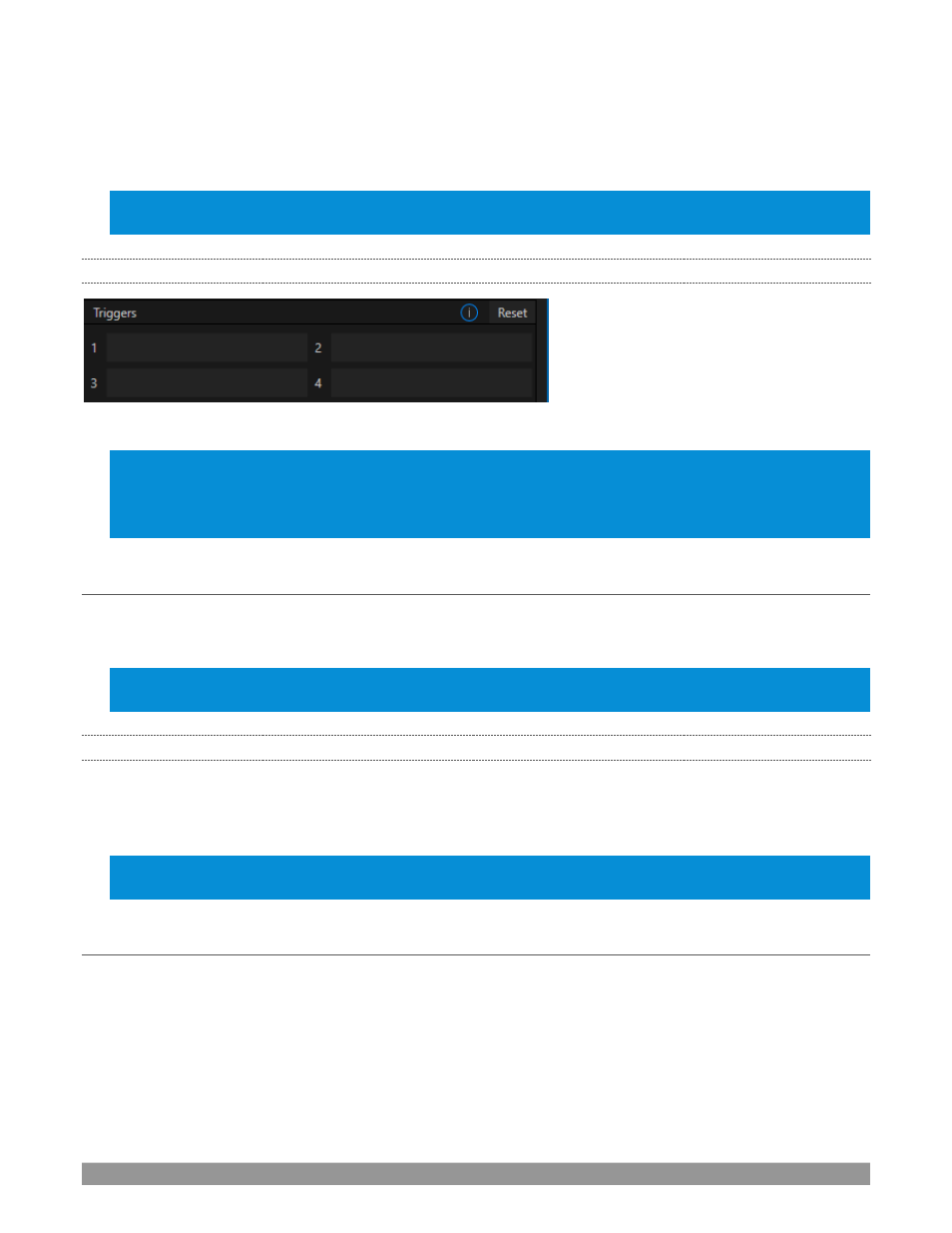2 triggers, Section 17.2 managing macros, 1 session macros – NewTek TriCaster TC1 (2 RU) User Manual
Page 193: Section 17.3 automation

P a g e | 177
One example would be when you want to instantly reconfigure
M/Es
with different virtual sets for a scene
change; or perhaps you want to quickly disable
LiveMatte
for all
Media Players
at once. The possibilities are
endless.
Hint: You can record a macro that includes other macros. Depending on your order of operations, you may
need to re-highlight the newly recorded macro in the list to show its Stop control (to end macro recording).
17.1.2
TRIGGERS
FIGURE 214
The Triggers controls located near the bottom of the Macro Configuration panel allow you to configure one or
more ways to launch macros. For example, select a macro, click in one of the Trigger boxes, and then press a
suitable keyboard shortcut to assign it to that macro. (See the accompanying Automation and Integration
Guide for a more extensive discussion of triggering macros, including MIDI control and more.)
SECTION 17.2
MANAGING MACROS
The
Macro Configuration
panel has management features such as folders, rename, clone, and hotkey
assignment, as well as
Import
and
Export
(use these to copy macros to other units, and for backup).
Hint: Premium Access membership unlocks additional and very useful import/export file format options for
macros, including JSON, Excel (.XLSX), and even a working Javascript (.js) example.
17.2.1
SESSION MACROS
It’s easy to keep macros designed for use with a spe
cific production organized and accessible, thanks to the
Session Macros
folder in the
Macro Configuration
panel. Macros in this group are exposed within that session
only (or new ones based on it, if the operator uses template sessions).
Note: Please refer to the accompanying Automation and Integration Guide for full details, including a
discussion of the integrated Macro Editor.
SECTION 17.3
AUTOMATION
We have discussed automation features elsewhere in this Guide, notably in Sections 8.1.4, 11.1.1, and 0.
Please refer to the accompanying
Automation and Integration Guide
for additional discussion of these
powerful features.
